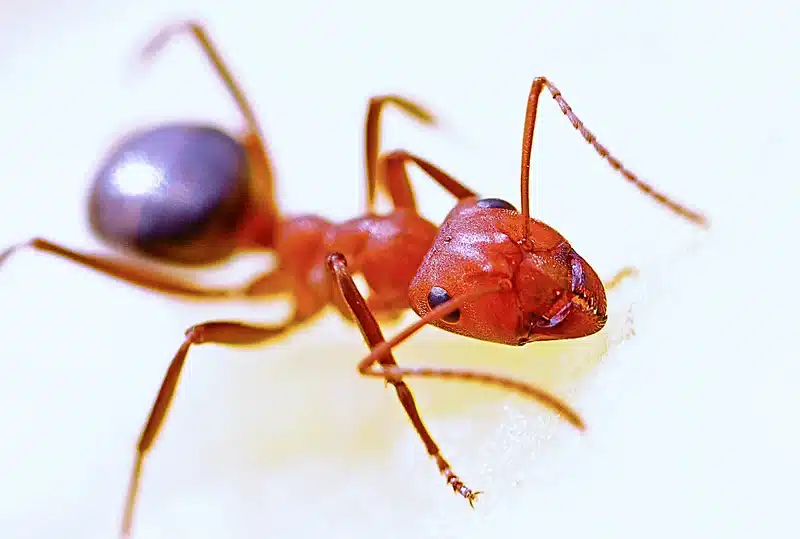Spring brings homeowners to call about small red ants marching across counters. Since 2015, I’ve worked as a licensed technician in the DC area. I know how frustrating it is to see those tiny workers in your kitchen or bathroom.
What Are Small Red Ants?
Homeowners use “small red ants” for any reddish ant ⅛-¼ inch long. This umbrella term covers different species that look alike. Correct ID is key before picking a treatment.
Common Small Red Ant Species
Imported Fire Ants
These ants have polymorphic workers and build dome-shaped mounds with no central hole. They sting painfully and swarm when disturbed.
Fire Ant Danger
Imported fire ants deliver painful stings and can swarm aggressively when their mounds are disturbed. If you have children or pets, keep them away from visible mounds and call a professional for safe removal.
European Fire Ants
Often found under debris, this species forms hidden nests. They can pack a mild, painful sting.
Pharaoh Ants
Tiny and pale, these indoor ants trail near water and food. They feature a 12-segmented antenna with 3-segmented club and don’t sting humans.
Acrobat & Pavement Ants
These look reddish too but rarely bite hard. Acrobat ants raise a heart-shaped gaster, while pavement ants nest under concrete. Learn more in Kinds of Ants: Identifying Different Types in DC Metro.
How to Identify Small Red Ants in Your Home
Collecting and Examining Specimens
Use clear tape or an alcohol vial to collect workers. You can send samples to VA Tech or UMD Extension labs for free ID.
Key Physical Features
Check size, color and waist nodes:
- Two waist nodes often mean fire or European fire ants
- Visible stinger marks fire ants
- Heart-shaped gaster hints acrobat ants
For more detail, see Ant Identification Chart: Types of Household Pests & Control.
Nest and Trail Signs
Indoor trails usually head to sinks, outlets or kitchen pantries (Pharaoh ants). Outdoor mounds appear in sunny turf or under foundations (fire ants).
Why Small Red Ants Invade Your Home
Ants enter homes for food, water and shelter. Common attractions include:
- Spilled sweets or proteins
- Dripping faucets or leaky pipes
- Moist mulch or soil against foundations
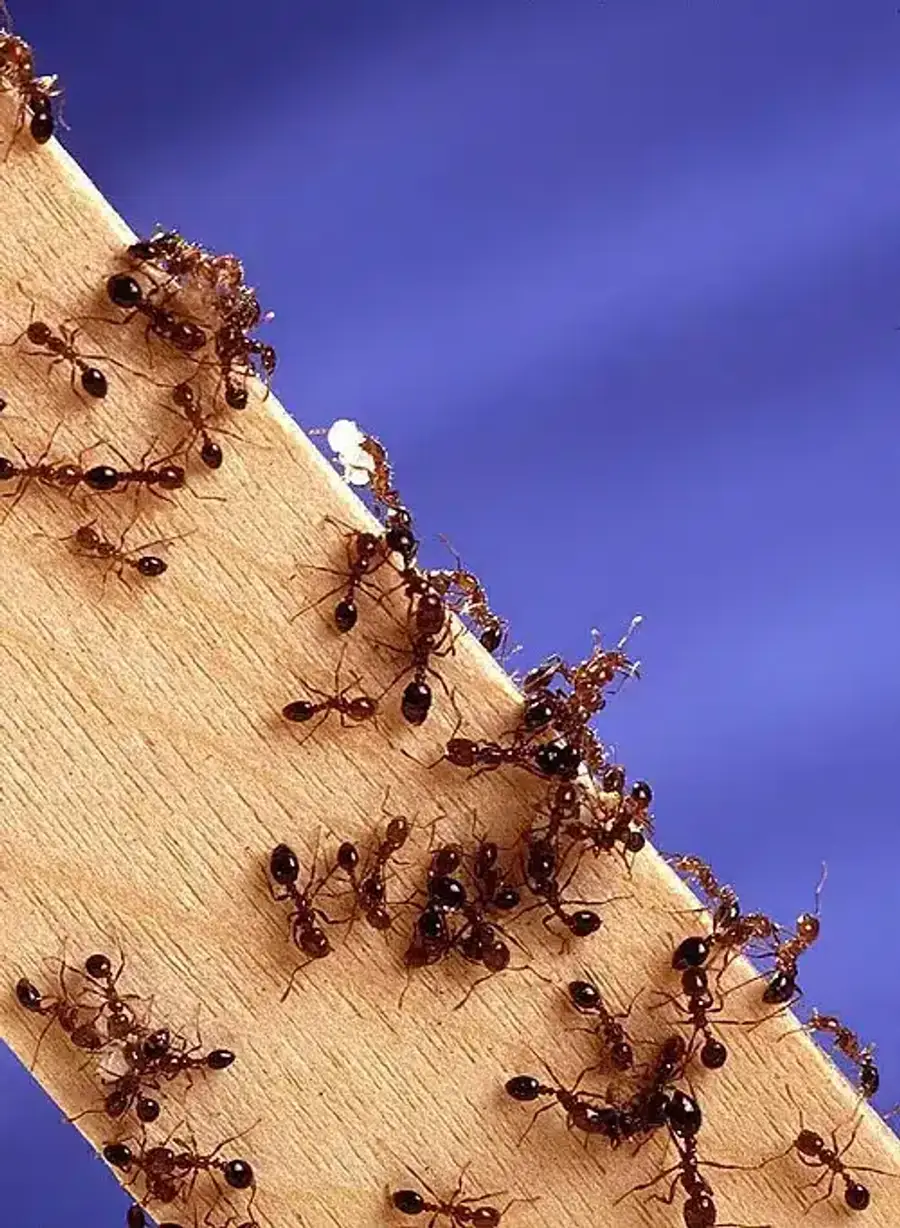


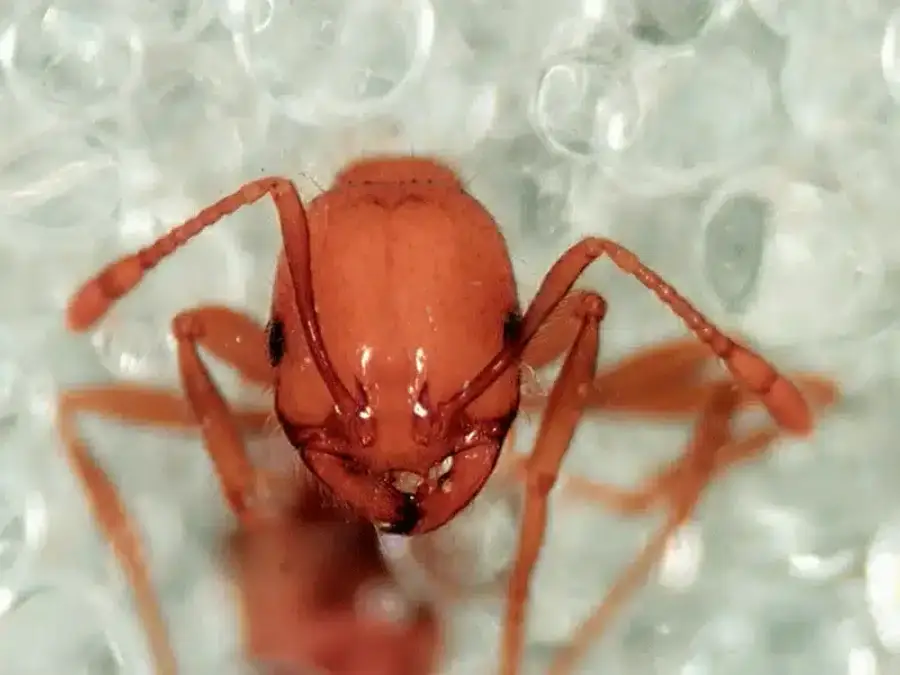
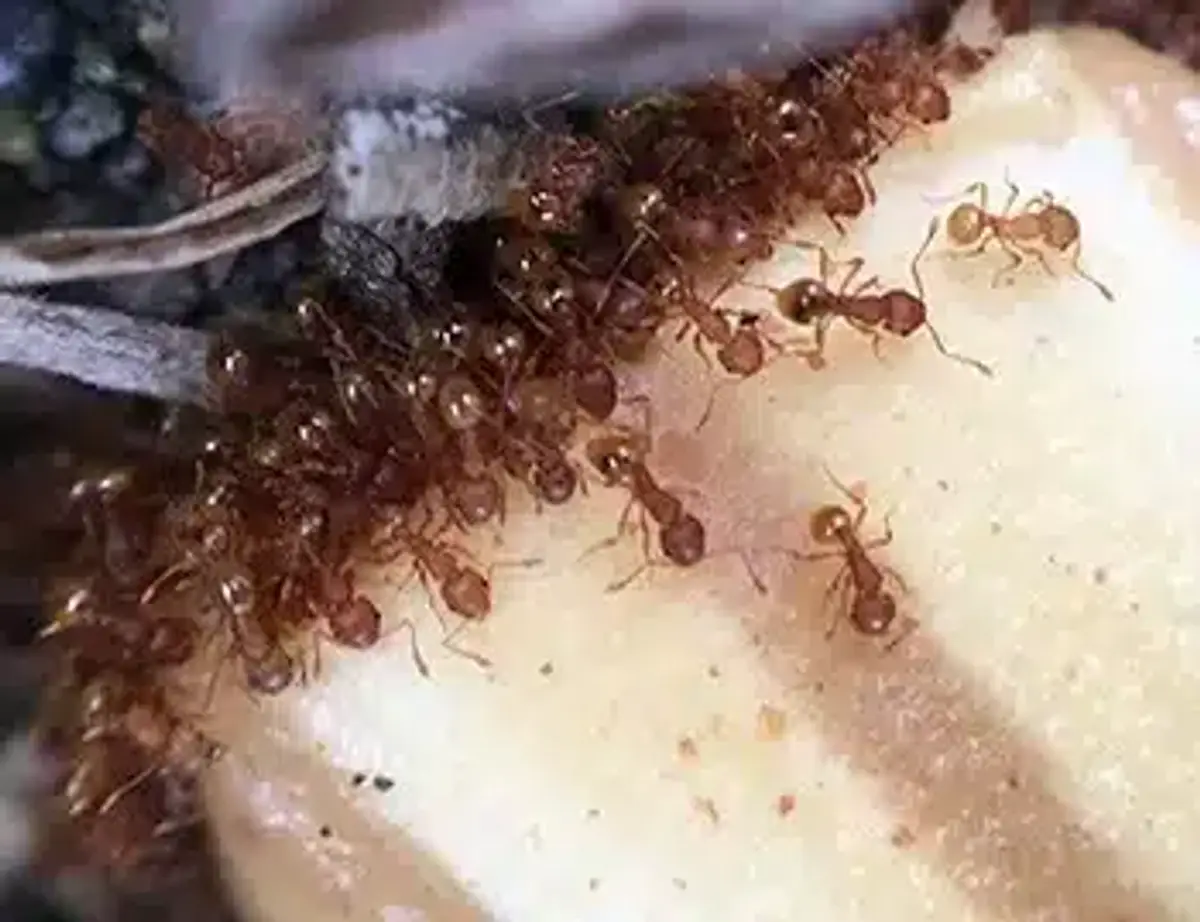
To cut off their trail, check our tips in How To Keep Ants Away: Pro Techniques vs DIY Ant Control.
DIY vs Professional Treatment for Small Red Ants
DIY bait or spray might break trails and split colonies. I’ve seen this make things worse. As a licensed technician, I target both visible ants and hidden nests.
DIY Treatment Risks
Using repellent sprays or pouring boiling water on ant nests can cause colonies to split and scatter throughout your home. This “budding” behavior makes the infestation worse and harder to eliminate.
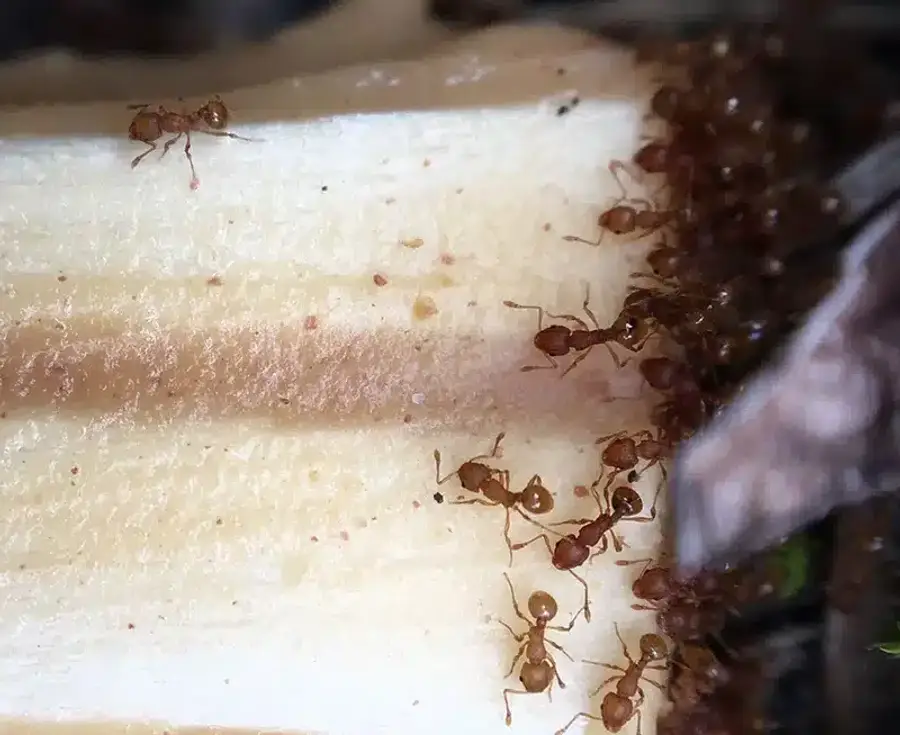

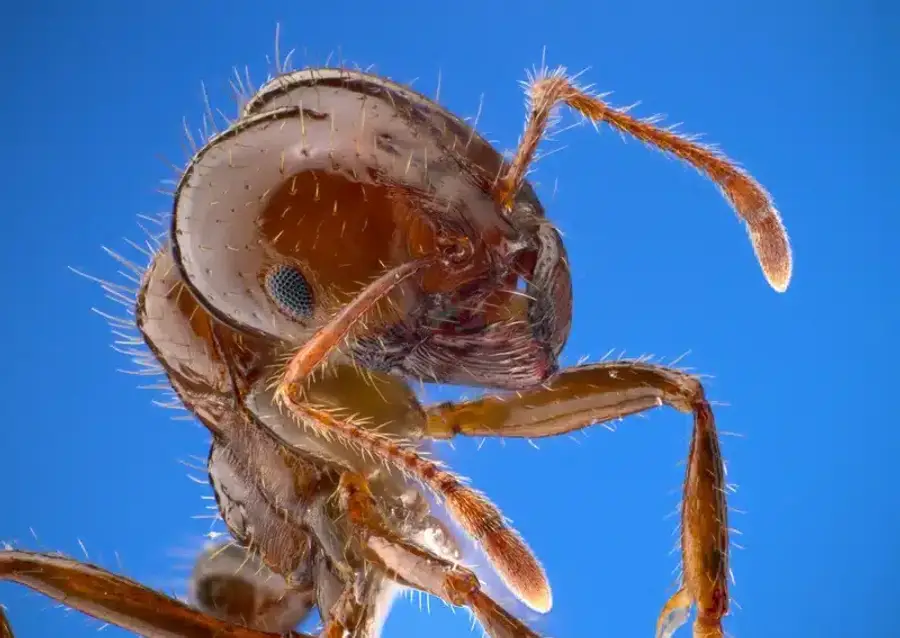

Hiring a pro means:
- Exact species identification
- Tailored baiting and drenching plans
- Follow-up visits until the job’s done
Proven Methods to Eliminate Small Red Ants Fast
Indoor Baiting Campaigns
For Pharaoh ants, we place non-repellent gels or boric acid baits near trails. This lets ants carry bait back to the queen.
Outdoor Mound Treatments
Imported fire ants need a “two-step program”. First, broadcast bait. Then, follow up with mound drenches if activity persists.
Chemical Tactics: Baits, Drenches & Sprays
We use:
- IGRs like pyriproxyfen and methoprene
- Metabolic inhibitors such as hydramethylnon and indoxacarb
- Spinosad or metaflumizone options
Cultural Controls: Sanitation & Moisture Management
Good sanitation and moisture fixes slow ant pressure:
- Caulk cracks around doors and windows
- Keep counters dry and trash sealed
- Remove mulch touching the foundation
Learn more from What Do Carpenter Ants Eat? Food Sources & Control Tips.
Integrated Pest Management for Small Red Ants
Inspection & Record-Keeping
We map every mound and trail, then log results in a 78-point home inspection.
Cultural & Mechanical Controls
Clear debris, fix irrigation leaks and improve sun exposure to break nesting spots.
Chemical Treatment Plans
Our IPM toolbox mixes baits, non-repellent sprays and spot drenching for lasting control.
Safety & Environmental Considerations
All products we use are EPA approved and vetted by our internal research team. We avoid treatments near pollinator areas and water bodies.
Seasonal Considerations for Small Red Ants
Imported fire ants forage best when soil is 70-95°F, so spring and fall baiting works well. European fire ants peak in summer. Pharaoh ants stay active indoors year-round.
Better Termite’s Treatment for Small Red Ants
Expert Phone Consultation & 78-Point Inspection
Call our licensed technicians directly for a quote and detailed plan. No phone trees, ever.
Non-Repellent Treatments Inside & Outside
We apply crack-and-crevice and perimeter treatments that ants share, cutting the colony at its root.
Maintenance Visits & Free Unlimited Callbacks
Return visits every quarter keep ants away. If ants come back, we’ll retreat at no cost.
Benefits of Our Research-Based Approach
Our internal research team removed 9 harsh chemicals from our programs. We rely on products like Essentria, Alpine, Sentricon and borate-based solutions.
Preventing Future Infestations of Small Red Ants
Exclusion & Sealing Entry Points
- Caulk around pipes, wires, and utility penetrations
- Install door sweeps and repair window seals
- Seal foundation cracks and gaps
Landscape & Moisture Management
- Adjust irrigation to prevent pooling water
- Improve soil grading for proper drainage
- Remove mulch from direct contact with foundations
More tips at How to Prevent Ants in Virginia.
Seasonal Maintenance Tips
- Schedule tri-annual inspections (three times per year) and treatments
- Monitor ant activity during spring and fall peaks
- Maintain year-round baiting for indoor species
Frequently Asked Questions
What are the most common small red ant species in Virginia, Maryland, and DC?
+
Most homeowners see imported fire ants, European fire ants, pharaoh ants and native acrobat or pavement ants in the DC metro area.
How can I tell if small red ants are fire ants or Pharaoh ants?
+
Fire ants build soil mounds and sting. Pharaoh ants are smaller, trail indoors and lack a painful sting.
Do small red ants bite or sting, and are they dangerous?
+
Imported and European fire ants can sting painfully. Pharaoh, acrobat and pavement ants can nip but not cause serious harm.
Can I eliminate small red ants with boiling water or home remedies?
+
Boiling water, bleach, and gasoline may split colonies or harm your home. They rarely solve the problem.
How long does a professional ant treatment take to work?
+
Most treatments show results in 7-14 days, though full elimination can take 6-12 weeks for species like Pharaoh ants.
How much does it cost to treat a small red ant infestation?
+
Ant plans generally start around $39 per month, plus a one-time setup fee. Final cost depends on infestation size.
Why am I seeing small red ants in my kitchen sink?
+
Pharaoh ants seek moisture. Leaky pipes and damp sinks often attract indoor small red ants.
When is the best time of year to control small red ants?
+
Spring and fall are ideal for outdoor species. Indoor species like Pharaoh ants need year-round baiting. Feel free to call 703-683-2000 or email info@bettertermite.com with any questions or to schedule an inspection.
With five years of hands-on experience in the pest control industry, George Schulz is a registered technician with the Virginia Pest Management Association and a proud third-generation professional in a family business that's been protecting homes for over 57 years. He manages and trains a team of service pros while also leading internal research efforts—recently spearheading a deep-dive review of thousands of documents on pest control materials to hand-pick the most kid and pet friendly, most effective solutions tailored specifically for homes in the DC metro area.
